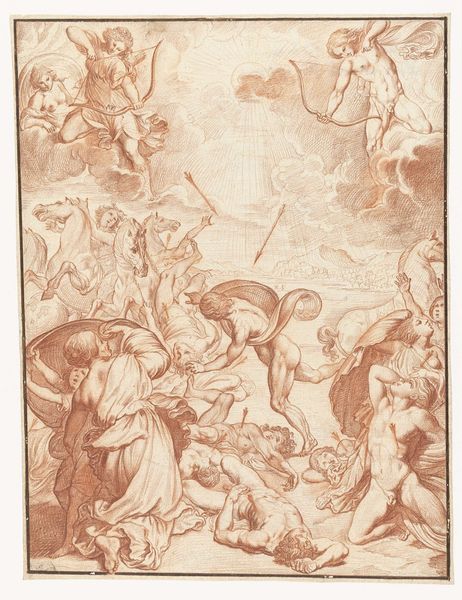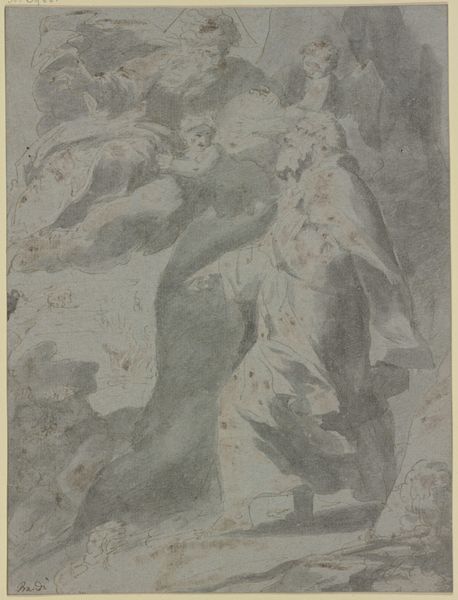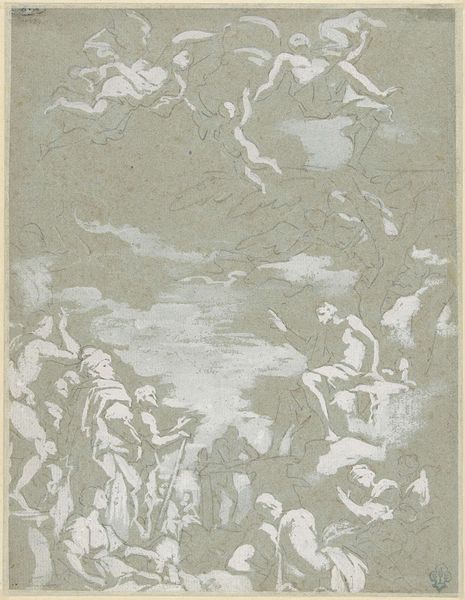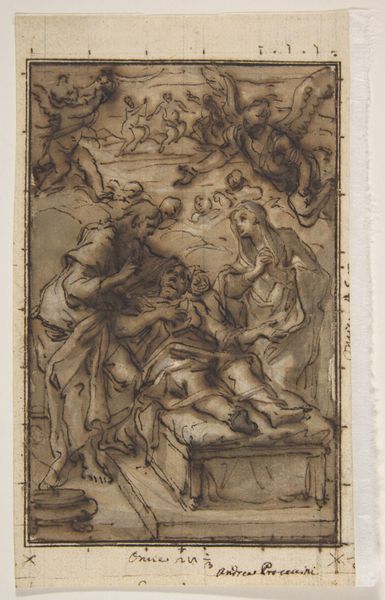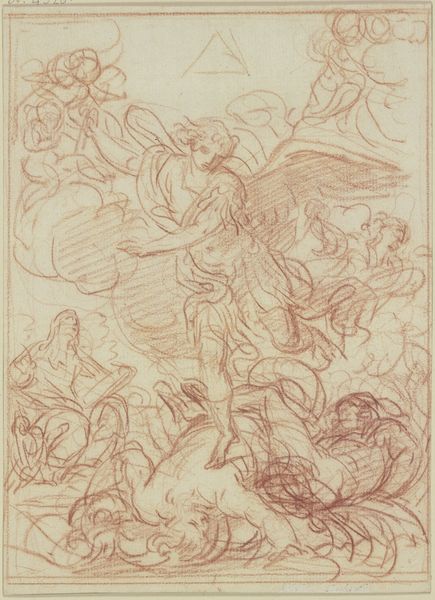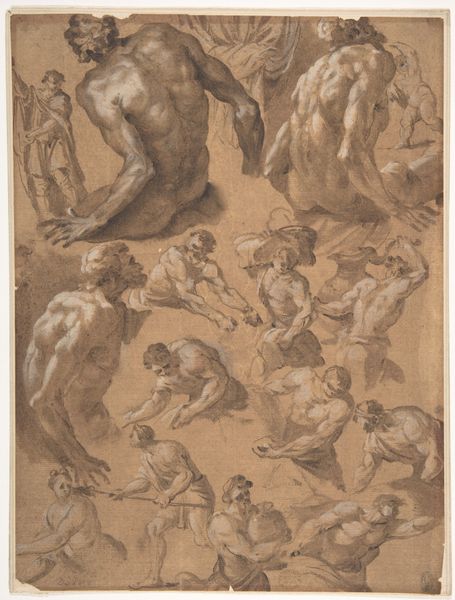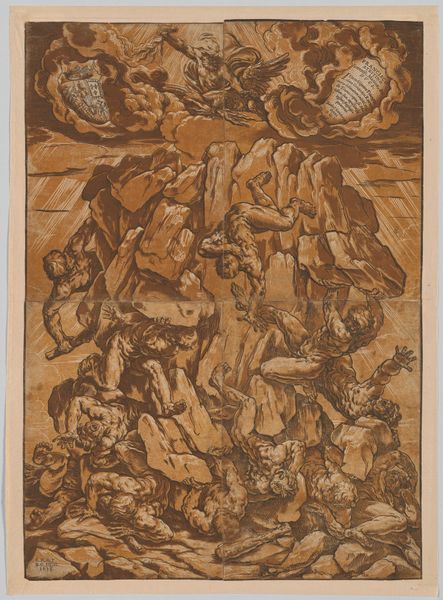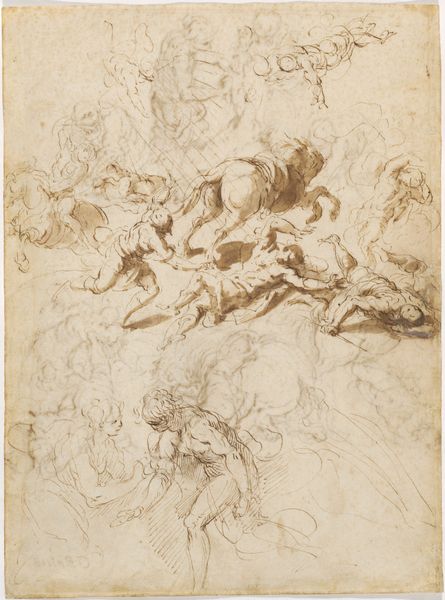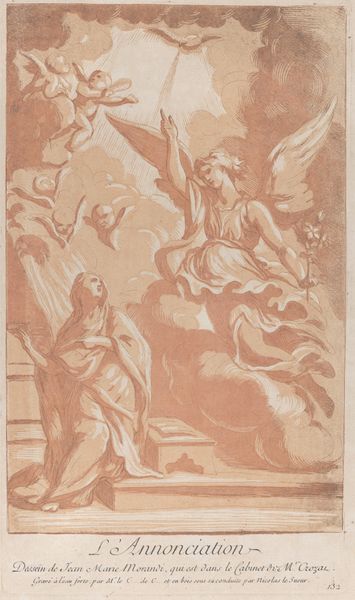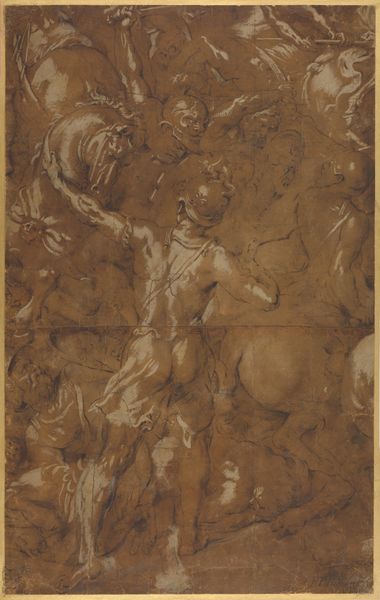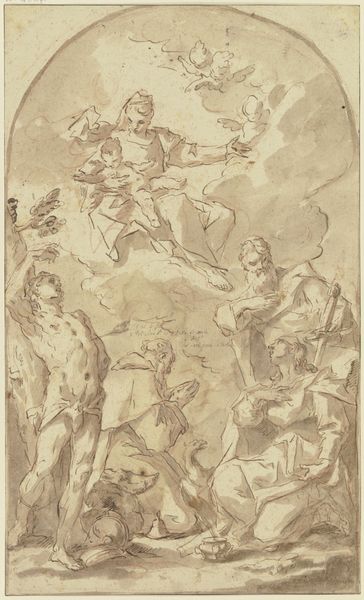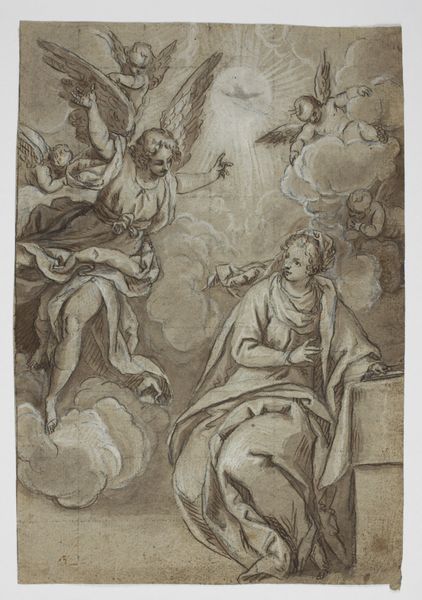
drawing, charcoal
#
drawing
#
baroque
#
charcoal drawing
#
figuration
#
oil painting
#
charcoal
#
history-painting
Dimensions: sheet: 29.5 × 18.2 cm (11 5/8 × 7 3/16 in.), arched top mount: 34.6 cm (13 5/8 in.)
Copyright: National Gallery of Art: CC0 1.0
Editor: This is Alexandre Ubeleski’s "The Annunciation," created around 1690, using charcoal. I’m immediately struck by how the artist used a singular reddish-brown tone to create this scene with such dynamism and depth. What do you see in this piece from a formal perspective? Curator: The use of the red chalk, or sanguine, is paramount to the reading of the piece. Notice the delicate hatching technique Ubeleski uses to build form and volume. The linear quality, achieved through cross-hatching, directs the viewer's eye from the earthly realm to the divine. Note how the density of line work differs between the figures. What is achieved? Editor: The angel and the figures above appear ethereal. There's a lightness to them compared to Mary. The contrast separates the sacred and human spheres, creating a visual hierarchy. Curator: Precisely. Also observe the strategic placement of light and shadow. Ubeleski uses highlights to accentuate the folds of the drapery, thereby adding movement and emotional depth to each figure. Notice how the texture differs; this juxtaposition leads to the tension. Editor: Yes, the rough texture gives so much texture! This seems to animate each character's response to the scene. Looking closely, it seems Ubeleski didn’t prioritize detailed realism but wanted to evoke something grander? Curator: It emphasizes a visual language prioritizes emotion and movement. One begins to note the Baroque inclination to activate form; not simply to represent it, but create through its presentation something emotionally dynamic and transformative. Do you find the artwork successful at delivering on that aesthetic? Editor: Definitely. Paying closer attention to how the elements function formally reveals an interesting story. The lines and shading work together wonderfully. I'll need to revisit and analyze art this way from now on! Curator: Indeed, and what can be noted of the Baroque in one context has a relationship to our modern visual landscape in so many other complex ways. Consider how the structures create content and deliver experiences to a contemporary public.
Comments
No comments
Be the first to comment and join the conversation on the ultimate creative platform.
